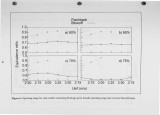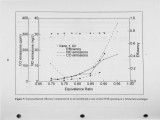| OCR Text |
Show INTRODUCTION As a majority of water heaters operate with diffusion or partially premixed burners, nitrogen oxide (NOx) levels are often greater than 50 nanograms of NO x per Joule of heat output (ng/J). There is concern in the industry that stricter California regulations (possibly < 40 ng/J or less) will be unattainable by their current products without expensive pollution remediation strategies. An alternative to diffusion burners is to use premixed burners which have lower NOx levels due to the lower flame temperatures of lean premixed combustion. Although premixed burners are currently offered, they have not penetrated a large sector of the market because they tend to be costlier and more difficult to scale than their counterparts. The objective of our research is to develop the premixed weak-swirl burner (WSB) for use in commercial applications. This burner was originally developed for fundamental research into turbulent combustion processesl . Its simplicity of design is conducive to producing a more economical, durable, and readily scaleable burner. The work described in this paper was performed as part of our collaboration with Teledyne Laars to assess the feasibility of utilizing the WSB in pool heaters. At the 1995 AFRC meeting, we presented a paper2 that described the results of adapting a WSB to a laboratory demonstration model of a 60,000 Btu/hr. spa heater. The WSB used for our previous. studies relied on tangential air jets to inject swirl into the outer edges of the premixed flow (Fig. 1A). Air injection was chosen to allow easy control of the swirl rate. This flexibility was important for the initial phase of our research to demonstrate the feasibility of the WSB in a confinement typical of a pool heater. These air-swirled WSBs may be better suited for those applications where compressed air is already available and utilized, such as in boilers and industrial furnaces. Clearly, air injection would be impractical and uneconomical (due to the necessary compressor and controls) for high volume, low margin consumer products such as pool heaters. Thus, an important milestone in the our collaborative project is to replace the air swirler with a simple and economical vane-swirler which could produce the necessary flow field to stabilize the flame. Reported here is our development of this new vane- 2 |




























